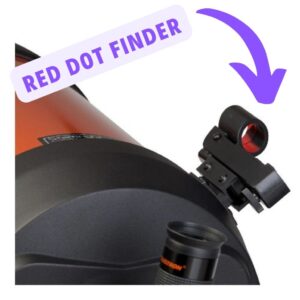This site contains affiliate links to products. I may receive a commission for purchases made through these links.
If you’re like me, you’ve spent countless nights staring up at the sky, captivated by the twinkling stars and the mesmerizing beauty of the Milky Way. It’s a sight that never fails to astound, a testament to the sheer grandeur of the universe.
But what if I told you there’s a way to enhance your experience? That’s right! With the right viewing practices, you can unravel even more wonders of our galaxy. From identifying constellations to spotting distant galaxies, I’m here to guide you through it all.
Choosing the Best Location
When it comes to stargazing, location is everything. Dark skies are ideal, eliminating both man-made and natural light pollution. A crystal-clear night away from bright city lights boosts your chances of seeing celestial wonders. I prefer desert locations or remote beaches, where sand and natural matter reflect less light.
Weather conditions play a significant role in stargazing. Choose a night with no clouds or only high, thin cirrus clouds which tend not to obstruct views. Remember to look at the Moon phase; it’s best to plan your stargazing when the Moon is in a new or crescent phase.
Here are three parameters to consider when choosing a stargazing location:
- Light Pollution: An important consideration. Check light pollution maps and aim for darker areas.
- Weather Conditions: Optimal stargazing requires clear skies and low humidity. Websites and apps offer accurate forecasts.
- Moon Phases: Keep a tab on lunar cycles. A New Moon night is particularly great for celestial viewing.
| Key Considerations | Best Condition |
|---|---|
| Light Pollution | Low |
| Weather Conditions | Clear skies, low humidity |
| Moon Phases | New Moon |
Don’t forget about altitude. A location that’s higher above sea level — perhaps in the mountains — can provide a clearer view of the stars. This is because there’s less atmosphere to inhibit your line of sight. But, balance is essential. The climate at higher altitudes can be harsh and cold, possibly limiting how long you’re comfortable spending outdoors.
Lastly, consider the horizon. Wide, open horizons give you the most comprehensive view of the cosmos. Avoid tall buildings and trees that obstruct the view. The North and South poles of the horizon are the most important for astronomical observations.
Taking these factors into account, you’ll be able to determine the best time and place for your stargazing adventures. By carefully choosing your location, you pave the way to identifying constellations and spotting distant galaxies, contributing to a deeper appreciation of the wonders of the Milky Way.
Understanding Light Pollution
To further our quest for the perfect stargazing experience, it’s important to understand light pollution. In simple terms, light pollution is the excessive or misdirected outdoor lighting. Unnecessary city lights, harsh car headlights, and even your neighbor’s bright patio light – they all contribute to light pollution. These lights drown out the stars in the night sky, making it difficult, if not impossible, to enjoy the splendor of our Galaxy.
Let’s check out how significant this issue is. The International Dark-Sky Association reports, approximately 80% of people worldwide live under light polluted skies. In the United States, this reaches an astounding 99% of the population.
So, if you live in or near a big city, you’re likely facing the effects of light pollution. Not only does light pollution interfere with our ability to stargaze, but it also tosses money down the drain by wasting electricity, disturbs wildlife, and might even have adverse effects on human health.
Over the years, many initiatives have sprung up to challenge, and ultimately reduce, light pollution. For instance, Earth Hour, an annual worldwide movement, encourages people to turn off their lights for an hour. Furthermore, various cities and regions are adopting ‘dark-sky ordinances’. Such rules limit outdoor lighting in an effort to preserve and enhance the natural darkness of night skies.
Stargazers, like us, can play our part in mitigating light pollution too. Opt for low-glare outdoor lighting, use blinds and curtains effectively, and undoubtedly urge others to do the same.
Understanding and addressing light pollution is a key step toward better skygazing. After all, the darker the sky, the brighter the stars, and the more breathtaking your view of the Milky Way can be.
Remember the last time you saw a shooting star or caught a glimpse of the dramatic Milky Way band? Think of how much more spectacular those sights would be without the light pollution.
Let’s look towards more strategies in the next part, ensuring our quest to experience the magnificent celestial show continues unabated.
Tools for Stargazing
If you’re serious about stargazing, it’s not just about choosing the right location and timing. It’s equally important to equip yourself with the appropriate stargazing tools. Let’s dive into some of the most essential aids that can enhance your cosmic exploration.
Telescopes are arguably the most popular tool among stargazers. It’s not just about getting any telescope, but picking the right one is crucial. You should be on the lookout for a device offering high-quality optics and adjustable magnification. Remember, high price does not always mean high quality when it comes to telescopes.
For beginners, a pair of binoculars might be a much more practical and affordable alternative. Especially, a pair designed for astronomy. Generally, they’re easy to use and transport, and provide a wide field of view. They’re also a great supplement to a telescope, helping you scan the sky for interesting objects quickly.
Many often miss the importance of a stargazing map or app. This is crucial in recognizing stars, constellations, and other celestial bodies. Traditional paper maps, like the planisphere, are user-friendly and good for learning. Alternatively, digital solutions such as Sky-Map or Star Walk provide real-time updates and can help you in finding less visible objects.
You’d also want to consider tools for protection and comfort, like warm clothing, a comfortable chair, and insect repellent. Trust me, the last thing you want during your cosmic journey is unnecessary distractions.
It’s also worth having a notebook handy for recording all your observations and thoughts. Sketching what you see through the telescope can greatly improve your observational skills and provide a permanent record of your discoveries.
Finally, to truly get the best of your stargazing experience, investing in a red flashlight can often be overlooked, but it’s essential. Regular flashlights can mess with your night vision, but red lights do not. A dim red light allows you to see your star maps and equipment without ruining your night vision.
Just imagine yourself under a clear, night sky, with all necessary tools at your disposal. It’s all about being prepared to venture into the cosmos. Remember, it’s not just about looking, but observing.
Identifying Constellations
After selecting the perfect location and equipping ourselves with essential tools, we’re all set to dive into the heart of stargazing: identifying constellations. Constellations are essentially the patterns formed by stars. They play a pivotal role in navigation, help define the celestial sphere, and hold significance in various mythologies.
It’s no secret that learning to identify constellations is a core aspect of stargazing. It allows us not just to appreciate the wonders of the night sky, but also to navigate our way around it. A constellation chart or a stargazing app is instrumental in learning to identify constellations. These tools provide images of the constellations and highlight significant stars or celestial objects within them.
You’d be amazed at how many constellations you can identify once you’ve got the hang of it! The Big Dipper, Orion, Cassiopeia, and Leo are just a handful of the 88 recognized constellations. It’s fascinating to watch as these constellations shift and change positions across the night sky as seasons pass.
Understanding how these heavenly bodies move around can make the difference between a casual stargazer and a true aficionado. Many seasoned stargazers can reel off the names of constellations and stars they spot! But don’t worry, it’s easier than you might think. It just takes a little practice.
Let’s get a bit technical. Constellations occur due to the Earth’s revolution around the Sun. Our position in relation to the stars changes throughout the year, causing different constellations to become visible. Grasping this concept can greatly increase your understanding and appreciation of the night sky.
In our quest for exploring the night sky, constellations act as a roadmap. They not only guide us to locate different stars or celestial objects but also enhance our overall stargazing adventure. Arm yourselves with a star map or a stargazing app and start connecting those twinkling dots!
Next, we’ll move onto the added benefits of understanding the celestial sphere and advancing your celestial knowledge to identify deep sky objects.
Exploring Distant Galaxies
As we continue our celestial journey, the scope of our exploration extends now beyond our own Milky Way to the vastness of distant galaxies. These galaxies aren’t just far-flung celestial objects, they’re entire worlds teeming with billions, perhaps even trillions, of stars.
Bridging this astronomical distance requires more than just the naked eye – here’s where telescopes come into their own. A quality telescope can transform those distant points of light into a panoramic spectacle, unmasking the intricate structures of galaxies. Moreover, the use of digital photography coupled with telescopes, known as astrophotography, can yield amazing results, capturing images of distant galaxies in stunning detail.
It’s incredible to think that when we observe galaxies such as Andromeda, we’re seeing light that has traveled a staggering 2.537 million light years! With that in mind, here’s a simple truth: stargazing is time travel. Each look towards the sky takes us back in time, presenting a snapshot of the universe as it was hundreds, thousands, or even millions of years ago.
Let’s create a quick comparison table of some notable galaxies and their approximate distance from Earth:
| Galaxy Name | Approx. Distance from Earth (light years) |
|---|---|
| Andromeda Galaxy | 2.537 million |
| Whirlpool Galaxy | 31 million |
| Sombrero Galaxy | 29 million |
| Pinwheel Galaxy | 21 million |
As we journey from one celestial marvel to another, learning about different galaxies adds a fresh dimension to our stargazing experience – it provides a sense of scale, helping us understand our place in the vast cosmos. Keep in mind that galaxies are best viewed on clear, dry nights when the moon is not too bright, so plan your sessions accordingly.
The process of identifying and observing distant galaxies can test your patience, but the rewards are truly humbling. To aid in your exploration, there are various star maps and apps available that’ll help you locate these galaxies.
Conclusion
So, we’ve journeyed through the vast expanse of the Milky Way, uncovering the best practices for a stellar stargazing experience. We’ve learned that location is key, with dark skies and the right weather conditions playing a crucial role. We’ve delved into the issue of light pollution, realizing that it’s not just a global concern but also a personal one that can impact our night sky observations.
We’ve discovered the importance of the right tools and knowledge, from telescopes and maps to recognizing constellations and understanding their seasonal shifts. We’ve explored the awe-inspiring realm of distant galaxies, realizing that with patience and the right aids, we can observe these cosmic wonders. Remember, every star we see, every galaxy we spot, is a step towards understanding our place in this vast cosmos. Stargazing isn’t just a hobby; it’s a journey of discovery, a cosmic voyage into the unknown.







